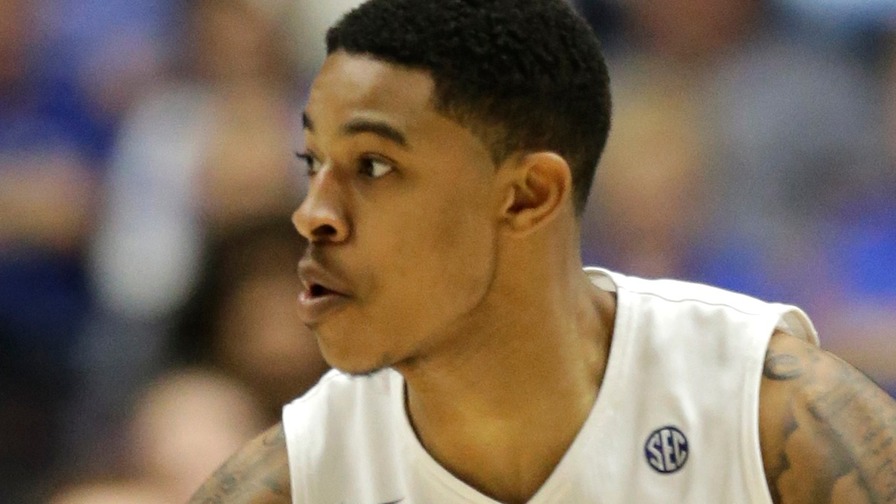Finding Value in the 2016 NBA Draft: Tyler Ulis Is a Shorter Kris Dunn

Around this time last year, I climbed up on my soapbox to explain why NBA teams should've been targeting Myles Turner in the impending NBA draft. The main focus of this was that Turner was -- based on his per-40 numbers and much more -- a poor man's Karl-Anthony Towns.
Fast forward to today, a time in which Towns has posted the best rookie campaign since Tim Duncan, and almost no one would believe that point.
And I definitely understand why.
The number-one overall pick is proving to be a generational talent and far outplayed Turner, who came off the board 10 picks subsequent to the older Towns. However, as great as Towns was in his rookie campaign and as promising as the future is for him and his Minnesota team, the two players competed in totally different situations.
Towns, as in his brief collegiate career, was featured as the cornerstone of his team while Turner, in his one year at Texas, shared the court with multiple bigs and played just over half the minutes (1,367) of Towns (2,626).
All of this is to say that a career isn't decided in one year.
This season, we saw just about everything from Towns, but we saw merely flashes from Turner with a lot yet to be seen. If Turner fulfills the promise that he has shown, then we might just see similar value for Indiana's 11th pick than Minnesota's 1st.
And finding value later in the draft -- even at the tail end of the lottery -- is never a bad proposition. Comparing the collegiate numbers and advanced stats of a highly regarded prospect to that of a less-renowned prospect in order to find value in this year's draft could prove fruitful yet again.
Tyler Ulis Versus Kris Dunn
Towns' former Kentucky teammate, Tyler Ulis, and how he stacks up to Kris Dunn, the highest-rated point guard in this year's draft.
Player A vs. Player B
| Per 40 Minutes | Points | Asssits | Turnovers |
|---|---|---|---|
| Player A | 19.9 | 7.6 | 4.3 |
| Player B | 18.8 | 7.6 | 2.1 |
Based on those numbers alone, you'd want Player B, right? After all, both share nearly the same output while Player B is much less reckless with the basketball.
Well, according to NBA scouts, you're wrong.
Player A is Kris Dunn, and Player B is Tyler Ulis.
And when we dive further into the advanced numbers, Ulis looks even better on paper.
In his second and final year with Kentucky, Ulis was a much more valuable player.
| 2015-16 Stats | PER | Win Shares | Win Shares per 40 Minutes |
|---|---|---|---|
| Tyler Ulis | 23.9 | 7.1 | 0.221 |
| Kris Dunn | 23.2 | 4.5 | 0.166 |
Not only did Ulis rate superior in terms of Player Efficiency Rating, Win Shares, and Win Shares per 40 minutes, but he also matched Dunn in shooting as measured by Effective Field Goal Percentage (49.7% compared to 49.9%) and True Shooting Percentage (56.7% compared to 54.1%).
He also produced 90 more points on perfect dimes like this.
What Gives?
The big reason for Ulis' efficiency advantage is his offensive production.
Don't get me wrong, though, Ulis was also solid on the defensive end. Nonetheless, with a Defensive Rating of 94.8, 2.3 Defensive Win Shares, and 3.0 steals per 40 minutes in his final season in Providence, Dunn has a clear edge defensively. And, at 6' 4.25" with a 6' 9.5" wingspan, Dunn has his NBA frame to thank for that.
Dunn's combination of size and athleticism gives NBA teams hopes that he will continue to harass opposing ballhandlers; the same cannot be said for the 5'9" Ulis.
So, basically, scouts see Dunn as a proven defensive player and a promising offensive playmaker as well. The one knock on him is his turnover rate and lack of consistency in an outside jumper, two things that Ulis already has figured out.
In this case, size is everything.
Dunn is a projected top-five pick, with his most likely landing spot at number five to Minnesota. As for Ulis, if you value production over potential, he is a steal at picks 14 to 25, where he'll more than likely become part of a veteran team looking to freshen up at the floor general position.
















